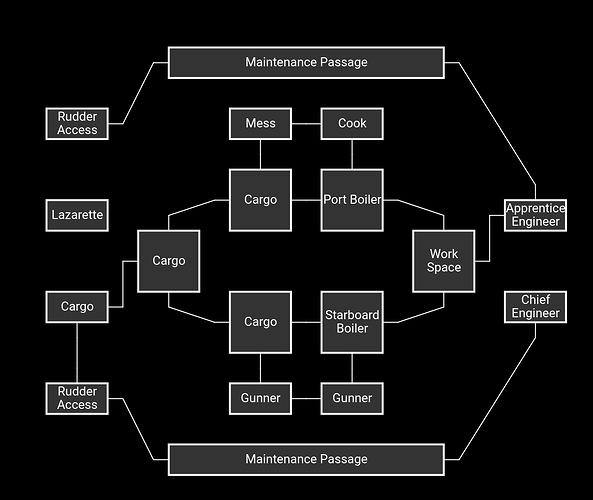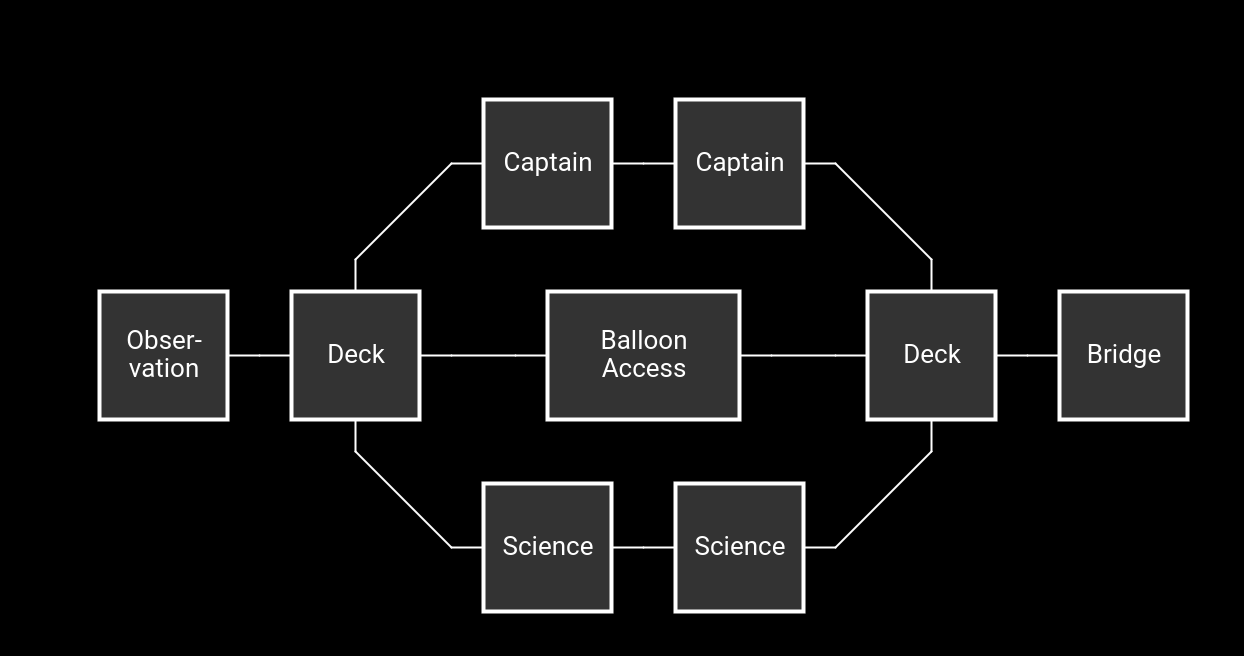I am now deeply into the weeds writing a game set onboard a ship, with a crew of NPCs who move around performing their duties as the player sneaks around and tries to solve a murder to clear their name. So far so good. Just one problem.
I know very little about ships.
The setting is specifically a retrofuturistic zeppelin (think steampunk aesthetic), so I can take a lot of artistic liberties for the sake of the story and the gameplay. But I also know we have both mariners and naval historians here who might have useful insights, as well as being interested in IF. So this seems like a good place to solicit feedback, and see if I’m crossing the line from “artistic liberties” to “ruins my suspension of disbelief through lack of research”.
The ship has two decks, each approximately six rooms long and four rooms wide in parser IF terms. The lower deck is divided between cargo storage in the aft part, and the boilers in the fore part. The gunner, cook, and two engineers each have a bit of space down here, and walkways on the outside allow for maintenance to the hull. (This seems more practical for an airship than for a normal, seafaring ship.)
The upper deck is simpler and less maze-like. At the fore end is the bridge and helm; at the aft end is various instrumentation for navigation and weather observation. A cabin on the port side is dedicated to the captain and a cabin on the starboard side to the first mate-slash-medic.
In between the two decks is a low crawlspace where some of the machinery can be accessed, and also illegal goods can be stored, if this ship were ever doing any illegal smuggling, which of course it isn’t, that would be illegal.
The ship is currently flying with a skeleton crew of six, due to some unforeseen circumstances around the launch (read: law enforcement was about to get involved). As a result, everyone has their specialties, but they also generally do everything else as needed:
- Shimat, the captain, pilot, and helmsman
- Kasap, the first mate, navigator, and medic
- Ishme and Bashti, two engineers who keep the ship functional
- Qarrad, the gunner, who deals with threats to the ship (prevalent in the setting) and takes care of the cargo
- Udan, the cook, who keeps the crew happy and also takes care of the cargo (and passengers if there are any)
Some parts of the design are distinctly backwards from a normal ship, by design—the lower deck being larger than the upper one, for example, because there’s no longer any issues of volume below the water line vs volume above it. Other parts ended up backward mostly by complete accident, like the boilers and helm being at the front, and those can easily get flipped around if needed; those are just a consequence of putting the engineers’ quarters far away from the rudder access for puzzle reasons.
But most of all, I’m wondering if there’s anything about this—the design of the ship or the makeup of the crew—that just makes no sense to someone who’s used to sailing. Are there important things that have been left out and should be included, or at least explained away? Are there things that don’t make sense and should be cut (or explained away)? The design of the ship seems like an important part of this story, so I want to do it right—or at least right enough that people who know ships don’t spend the entire game saying “that’s nonsensical”.

